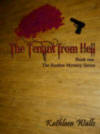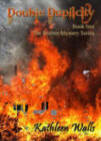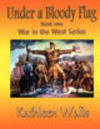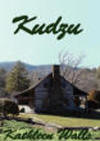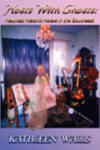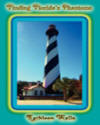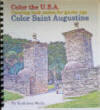Dudley Farm: A Trip into Florida's
Agricultural Past
Story and photos
by Kathleen Walls
Dudley Farm Historical State Park is an authentic 325-acre
working “Cracker” farm on the western outskirts of Gainesville.
A visit there gives you an accurate picture of North Florida
farming through the eyes of three generations of the Dudley
family. The farm began in the pioneer days of the 1850s when
Phillip B.H. Dudley and his wife, Mary, began the farm. After
Phillip’s death, the farm passed it on to his son, Ben, and his
wife, Fanny.
Miss Myrtle Dudley, the youngest of their
12 children and the last to remain on the farm, managed a small
cattle herd, vegetable, and flower gardens until her death at
94 in January 1996. She kept the farm intact by donating 24
acres to the park service in 1983. The park service later added
232 acres.
The visitor’s center tells the family’s
story with artifacts showing the history from early days to the
introduction of gasoline-powered equipment around 1945. When I
visited there were two musicians dressed in period clothing
playing some old-time music with a fiddle and a banjo on the
porch.
Another volunteer, Norm Tankersley,
tending the commissary and gift shop, told me more about the
park. The visitors’ center was a neighboring Cracker house that
had been donated to the state park.
The front section contains several other
historic buildings. There’s a blacksmith shop and lots of
antique farm equipment, horse-drawn plows and a beautifully
restores old wagon. There’s a sugar cane mule or horse-drawn
mill and a building where the cane was made into syrup. It is
still being done today at Cane Day Festival on the 1st Saturday
of December, 9 a.m. to 3 p.m.
There are other learning events as well.
Every Wednesday (except the 3rd Wednesday of the month) from
9:30 AM to 11:00 AM there is a docent who will teach a variety
of domestic skills including quilting, weaving, rug-crocheting,
basketry, woodworking, or corn shuck crafts.
When you walk down a trail through a
Florida hammock, you see the original farm. Dudley Farm, as it
stands today, was the home Ben Dudley, Jr. built in 1880 plus
his additions of a general store, kitchen, smokehouse, sweet
potato storehouse, dairy and canning house, outhouses, corn
crib and barn. Fortunately, he built them from heart of pine
lumber, so they withstood time and insects.
The home is a two-story board and batten
style with a tin roof. There are dormer windows in the attic
rooms. It is furnished with the original furniture much as it
was when the Dudley’s owned it. You can only visit the ground
floor.
You can sit in a rocker on the porch and
rest as you look at the blooming azaleas and other flowers. Or
you can walk through the home to the backyard and pump water
from the well with a hand pump out back.
The separate kitchen sits directly behind
the house. It’s spacious, with both a fireplace and an old wood
stove.
The outhouse is set even farther back from
the house. I wonder about having to go out there in the dead of
night, but I remember seeing chamber pots under the beds
inside, so probably no night walks. Other buildings reminded me
of all the chores needed to run a farm like this, the corncrib,
smokehouse, brooder house, milking room, dairy and canning
shed, not to mention feeding and caring for all the livestock.
Walk around the grounds and visit the
free-range turkeys and chickens roaming there. Deeper into the
grounds you see the Cracker horses and some cattle grazing.

















